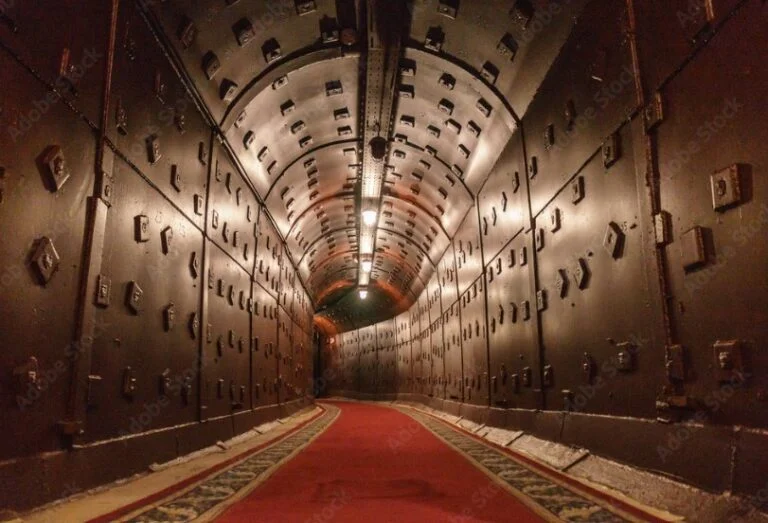In an era marked by increasing uncertainty—whether due to natural disasters, geopolitical tensions, or global pandemics—advanced shelters have become essential. One of the standout solutions in this arena is Xbunker, a state-of-the-art, highly fortified bunker designed to provide maximum protection and self-sufficiency. This article explores the design, technology, applications, and benefits of Xbunker.
Structural Design and Protection
Xbunker is engineered to endure the most extreme conditions, including earthquakes, nuclear blasts, and severe weather events. Its robust structure, made from reinforced concrete and steel, is designed for optimal resistance. The multi-layered defense system features blast-resistant doors and walls, ensuring that occupants are protected from external threats.
The construction isn’t just about strength. Xbunker is built with longevity in mind, incorporating advanced life-support systems that include air filtration units, water purification systems, and climate control technology. These features ensure that the environment within the shelter remains habitable, even during long-term occupancy.
Dimensions and Customization
Xbunkers come in a variety of sizes, catering to different needs—from individuals and families to corporate or government groups. Each unit is highly customizable, allowing occupants to modify the living quarters, storage spaces, and facilities based on personal preferences. This flexibility extends even to the interiors, which can be enhanced with luxury finishes for those seeking comfort alongside security.
Life-Support and Sustainability
One of the most impressive aspects of Xbunker is its self-sufficiency. The shelter integrates cutting-edge life-support systems that maintain air quality, provide clean water, and regulate temperature. These systems are powered by redundant energy sources, such as solar panels and wind turbines, making Xbunker largely independent from external utilities.
This emphasis on sustainability extends to other aspects of the shelter’s design. Xbunker promotes an eco-friendly lifestyle by utilizing renewable energy sources and optimizing resource consumption. This not only reduces environmental impact but also ensures that occupants can live comfortably without relying on potentially compromised external infrastructures.
Applications of Xbunker
While the most obvious use of Xbunker is residential, its potential applications are far broader:
- Residential Use: Homeowners can install Xbunkers as personal shelters, using them as a safe refuge during crises. With the added benefit of customizable interiors, occupants can ensure both security and comfort.
- Corporate and Government Facilities: Corporations and governments may use Xbunkers for critical infrastructure protection, ensuring the safety of personnel and continuity of operations. These shelters can house vital staff and protect sensitive assets during emergencies.
- Disaster Relief: Xbunker’s quick deployment capabilities and robust design make it ideal for disaster relief operations. These shelters can be set up in affected areas to provide immediate shelter and essential services to displaced populations.
Advanced Features
Incorporating the latest in technology, Xbunker offers several advanced features that enhance its functionality and user experience:
- AI Integration: Xbunker uses artificial intelligence to monitor and optimize the functioning of its life-support systems. AI also predicts maintenance needs, improving the shelter’s efficiency and longevity.
- Enhanced Communication: Xbunker is equipped with satellite connectivity and encrypted networks, ensuring that occupants can stay connected with the outside world, even during severe crises.
- Modular Design: Future iterations of Xbunker feature modular components, allowing for scalable solutions based on specific needs. This flexibility ensures that multiple Xbunkers can be combined to form larger, interconnected shelters.
Psychological Comfort
Interestingly, Xbunker’s design goes beyond just physical security. It also focuses on the psychological well-being of its occupants. Features like natural light simulations, ergonomic furnishings, and recreational facilities contribute to mental health and reduce the stress associated with confinement.
Challenges and Limitations
Despite its numerous advantages, Xbunker does come with certain limitations:
- High Cost: Given the advanced technologies involved, the cost of building and maintaining an Xbunker can be significant, making it inaccessible to some.
- Space Constraints: While the interior can be customized, the compact living conditions within a bunker still require occupants to prioritize essential items and adapt to confined spaces.
- Maintenance Requirements: The advanced systems integrated into Xbunker require regular upkeep to ensure they function properly during emergencies.
Future Prospects
As technology continues to evolve, the possibilities for Xbunker are expanding. Future models may incorporate advanced automation, further AI-driven resource management, and deeper integration with smart city infrastructures. As production scales up and costs potentially decrease, Xbunkers could become more accessible to a broader range of users.
Conclusion
Xbunker represents the pinnacle of modern shelter design, combining unmatched security with sustainable living systems and psychological comfort. While it comes with certain challenges, its advanced features make it an invaluable solution for individuals, corporations, and governments seeking protection in uncertain times. Whether for disaster relief or long-term habitation, Xbunker sets a new standard in shelter technology, and its future looks even more promising as advancements continue.
This makes Xbunker a pioneering force in the development of secure, resilient shelters in an increasingly volatile world.




